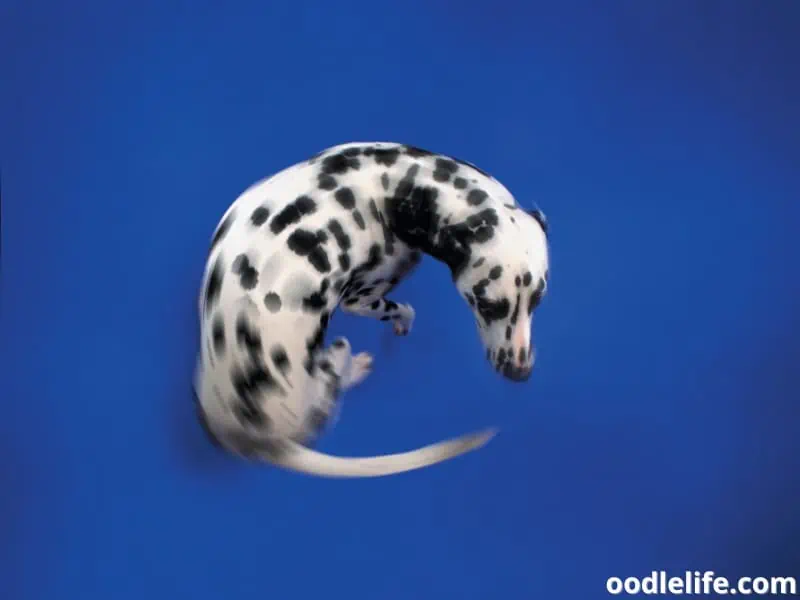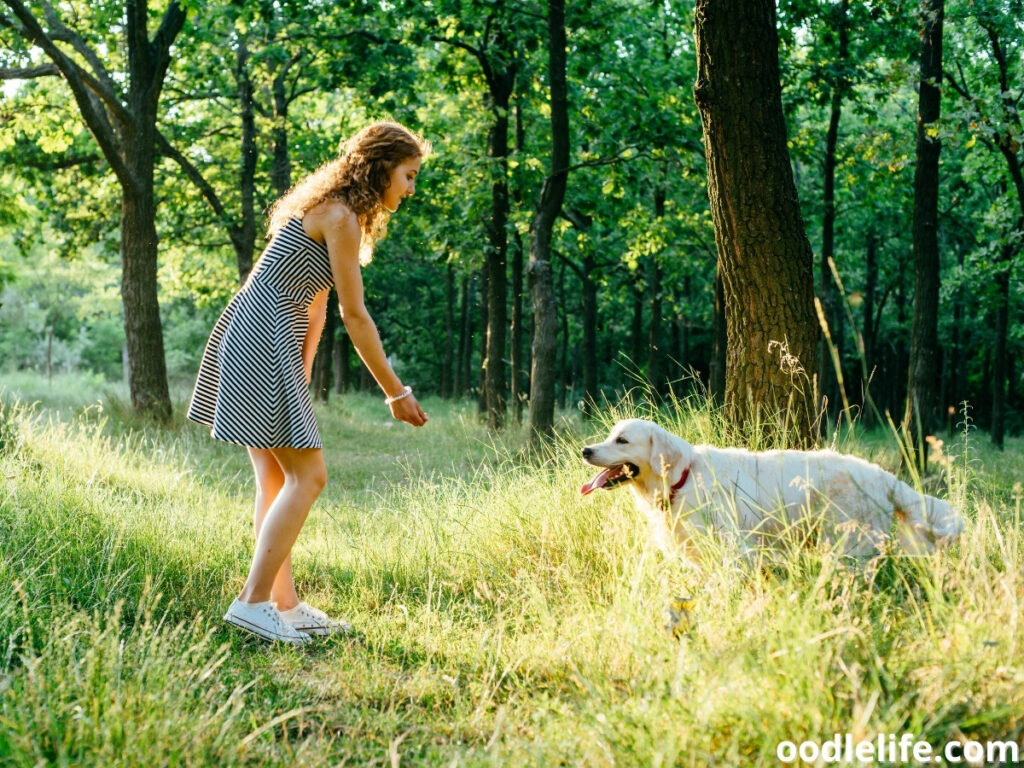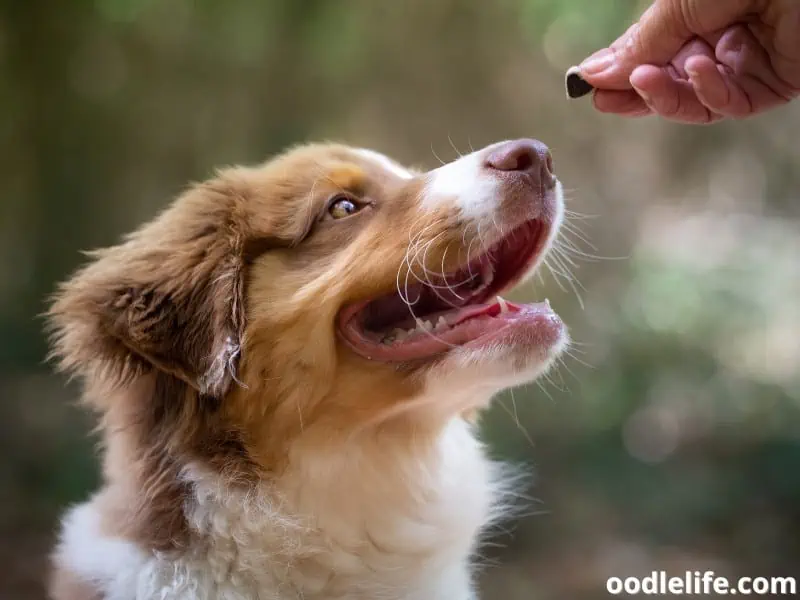Potty Trained Dog Peed on New Carpet [Help!]
Imagine this: your dog has been successfully potty-trained for months, yet inexplicably, they decide to defile your brand-new carpet with their pee. Frustration abounds, and the befuddling question arises – why is your furry companion sabotaging their own housebreaking success?
When faced with this issue, there are a few potential reasons to consider. Perhaps the most likely is urine marking, which can trigger your pup’s instincts to maintain their territorial claim through repeated visits. But fear not!

We’ll explore various solutions and strategies to re-assert your carpet’s potty-free status, and ensure harmony at home. Stay tuned for answers and advice bound to help both you and your pup navigate this perplexing predicament.
Causes of the Accident

Health Issues
One potential cause for a potty-trained dog urinating on a new carpet is a urinary tract infection (UTI). This issue can cause dogs to experience increased frequency and urgency to pee, sometimes without warning.
Keep an eye on your furry friend’s behavior and consult a veterinarian if you suspect a UTI or any other health problems.
Environmental Factors
Introducing new elements to a dog’s living space might trigger accidents. New furniture or rearranging existing items can throw off your pet’s routine and sense of familiarity.
Moving to a new house is another example of an environmental change that can lead to accidents. In these situations, it is important to be patient and reinforce the dog’s potty training.
Emotional Causes
Stress and anxiety can also cause a well-trained dog to have accidents. Separation anxiety or the addition of a new family member might make a dog feel uneasy and trigger this behavior.
Identify and address the sources of stress for your dog to prevent future accidents. Remember – laughter is the best medicine, so sharing a few funny anecdotes about your own “accidents” might just make up for the mess on the carpet.
Preventive Measures

Regular Monitoring
Keeping a close eye on a dog’s behavior is crucial for preventing accidents on new carpets. For example, if a dog starts sniffing or circling, it could be a signal that nature is calling.
Quick intervention may be required, whether it’s taking them outside or guiding them to a designated potty area.
By observing and responding to their cues, owners can not only avoid messes but also help reinforce proper bathroom habits.
Maintaining a Routine
A consistent daily schedule is the key. Ensure dogs have designated meal times and are taken outside for potty breaks at regular intervals throughout the day.
Creating a predictable routine will help them understand when and where to do their business, minimizing any accidents on the new carpet.
Remember that consistency is crucial; even slight variations in a dog’s routine can throw them off track and lead to unexpected issues.
Addressing Medical Concerns
Health issues, such as arthritis, could be a factor in a potty-trained dog suddenly peeing on a new carpet. Severe joint pain may make it difficult for dogs to reach their designated potty area in time.
Regular vet visits are essential for monitoring a dog’s overall health and addressing potential medical problems. If health issues are the cause, the veterinarian can help develop a plan to manage the condition and ensure a dog’s comfort.
By acting fast and staying proactive about a dog’s medical needs, owners can minimize instances of pee accidents and keep that new carpet looking pristine.
Cleaning the Carpet
When dealing with a potty-trained dog that has peed on a new carpet, it is essential to tackle the problem promptly and efficiently.

Immediate Actions
As soon as the accident occurs, blot the area with paper towels or a clean cloth to soak up as much urine as possible. Remember, the faster you act, the less likely it is for the stain and smell to set in.
Removing Odor
Prepare a one-to-one solution of white vinegar and water, and apply it onto the stain using a sponge. Let it sit for 5 to 10 minutes, then blot the area again to remove the liquid. For persistent odors, a mix of hydrogen peroxide, dish soap, and water can be used as an alternative homemade solution.
If you prefer natural methods, try using citrus essential oil, baking soda, or even vodka. These substances can help to neutralize the smell and prevent your dog from returning to the same spot.
Professional Cleaning
If DIY methods do not yield satisfactory results, consider hiring a professional carpet cleaner. They possess the necessary tools, techniques, and expertise to remove even the most stubborn stains and odors, ensuring a fresh and clean carpet.
Reinforcing Potty Training
When your potty-trained dog has an accident on your new carpet, it’s essential to reinforce proper behavior to prevent it from becoming a habit.
Consistent Reinforcement
Returning to the basics will help your dog re-establish its understanding of where to do its business. This includes regular monitoring and confinement when you are not available to supervise.

Remember to keep a consistent schedule of taking your dog out to potty, such as after waking up, after meals, and before bedtime. Consistency is the key to maintaining successful potty training and keeping your new carpet free from accidents.
Reward-Based Training
Positive reinforcement goes a long way in re-establishing potty training habits. When your dog uses the designated potty area, praise and reward them with a small treat or their favorite toy.

By associating this positive experience with the desired behavior, your dog is more likely to choose the proper spot to relieve itself instead of your new carpet. Laughs and belly rubs are also a great way to celebrate their potty victory.
When to Seek Professional Help?
If Fido’s sudden indoor “sprinkle spree” has you pulling your hair out, remember: there’s no shame in calling for backup. Consult a professional dog trainer or a veterinarian if the problem persists or seems to be more than just a so-called carpet crush.

Some signs that your dog might need professional intervention include excessive marking, ongoing medical issues, or a regression in their house training. A certified behaviorist can help pinpoint potential triggers and create a tailored training plan tailored for your furry friend.
As they say, you can’t teach an old dog new tricks… unless you have the right expertise on your side. So, in the battle of housebroken pup versus alluring new carpet, don’t be afraid to call in reinforcements. It’s better to tackle the issue head-on than let it marinate—literally.